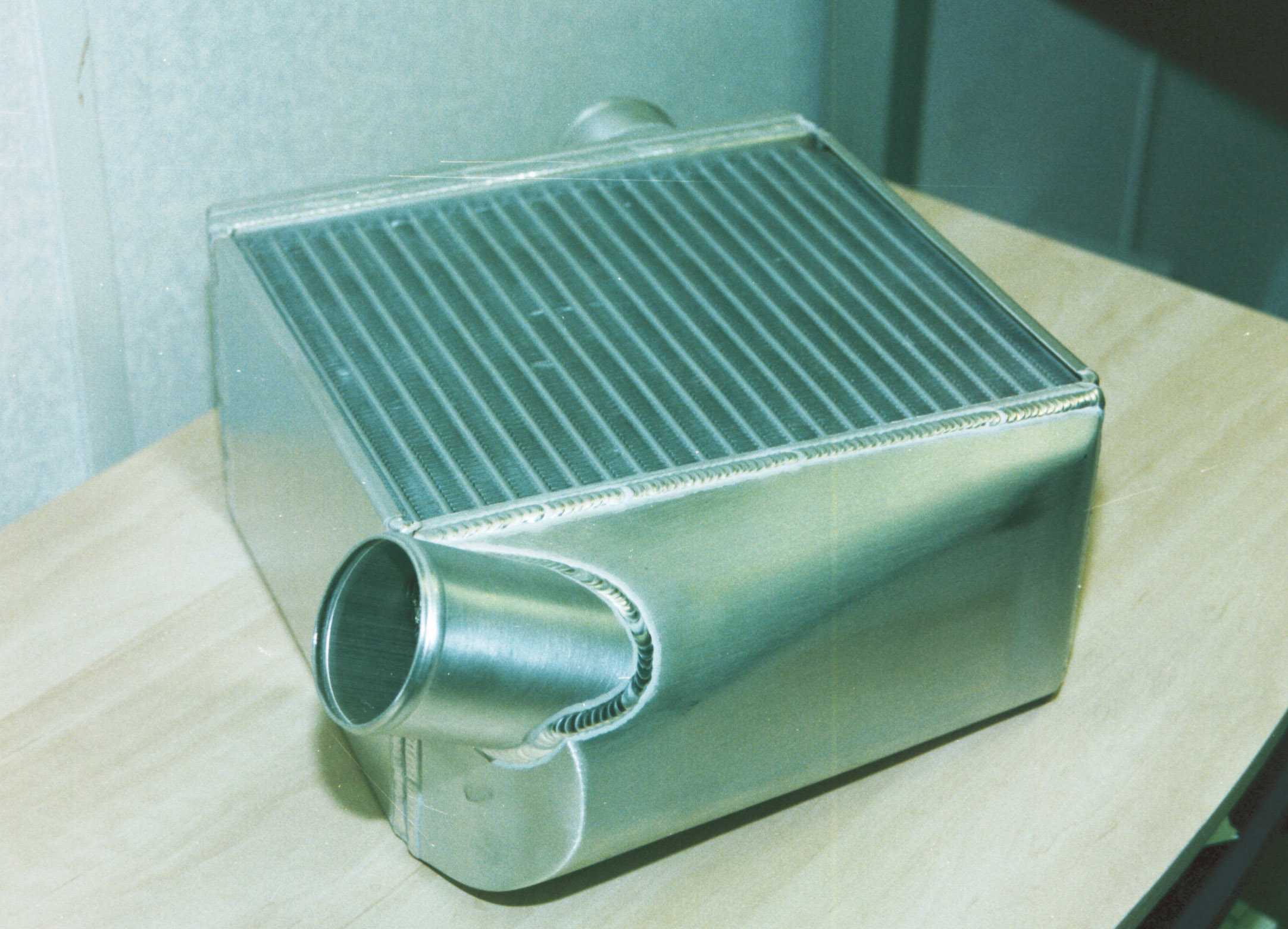The plastic intercooler
Modern engine intake air intercoolers are almost exclusively made from aluminium alloy. However, although aluminium has been chosen for its ability to dissipate heat efficiently rather than any other quality, this apparently unassailable characteristic is now being challenged. Strangely enough, this challenge is coming from the solar panel industry, where not only is the efficiency of heat transfer critical but also components have to last for 25 years or more.
In the automotive world the classic air-air intercooler matrix is made from sheet or tube aluminium alloy, which is pre-assembled and hot-dipped in a suitable molten aluminium-silicon brazing solution to bind and seal it. Before this though the matrix has to be cleaned by dipping it into a corrosive flux solution, all trace of which has to be removed afterwards. The corrosive nature of the chemicals involved means this is a hazardous process and subject to many rules and regulations concerning the materials involved. Having made the matrix core, and depending on the application, the end tanks will be fabricated and the whole lot welded together to produce a unit similar to the one shown in Fig. 1.
This manufacturing method therefore makes any form of heat exchanger or intercooler an expensive component which, given its proximity to the front or outer parts of the bodywork, can be easily damaged in the cut and thrust of modern racing. To reduce costs and improve product quality, OE manufacturers tend to make the end tanks these days out of injection-moulded plastics that are then mechanically clamped to the aluminium matrix core and sealed using sheet material sandwiched between the tank and the core.
While minimising costs as far as the technology allows, however, even this process still renders the matrix core susceptible to corrosion and damage as a result of cyclic fatigue. Aluminium alloys have no lower stress limit below which they will operate safely forever, so at some time during use they are bound to crack, with the inevitable loss of engine boost.
Since the end tanks are currently made from plastic injection components, the next stage in intercooler development must surely be to manufacture the matrix core out of similar materials, since most plastics do not corrode and the use of extruded or welded plastics is altogether a less hazardous process. The principal objection to this though would seem to be the relatively poor thermal conductivity of plastics compared with that of aluminium alloys – but not so, according to some reports. Computer simulation has indicated that, in modelling the heat exchange process, the thermal resistance of the thin plastic tubing used compared to that of aluminium was not the major problem one might have reasonably thought. The real issue would appear to be the boundary layer between the bulk air flowing and the tube materials.
By making the heat exchanger core out of extruded polyamide tubing, which could be laser welded together under precise computer control, 100% plastic intercoolers could be manufactured quicker and cheaper without many of the expensive and environmentally hazardous processes that go with current manufacturing methods. In addition, once fully developed, intercoolers will not only be more robust but lighter too.
And I guess there can’t be many areas where engine or vehicle technology is taking its lead from the solar panel industry.
 Fig. 1 - Traditionally fabricated aluminium alloy intercooler
Fig. 1 - Traditionally fabricated aluminium alloy intercooler
Written by John Coxon